
by Michelle Dwyer | Nov 25, 2015 | Blog, Health, Mind-Body-Spirit Connection, Movement and body
At this time of year, we hear a lot about gratitude. With Thanksgiving and the winter holidays almost upon us, it is a wonderful time of year to count our blessings and focus on all we have to be grateful for in our lives. But what about gratitude as a way of life?
Being in a state of gratitude all year long is good for our mind, body and soul. Expressing our gratitude not only improves our physical and psychological health, but it also deepens our relationships, helps us sleep better, motivates us to work harder, and supports our immune system. When we focus on gratitude, we are immediately in the present moment, which then reduces our stress, helps shift our perspective, and raises our energy.
One of my favorite resources on the importance of gratitude to our health and happiness is The Greater Good Science Center. In this article “Why Gratitude Is Good,” the world’s leading scientific expert on gratitude, Robert Emmons, explains the physical, social and psychological benefits of expressing the goodness in our world and how it “allows us to participate more in life. We notice the positives more, and that magnifies the pleasures you get from life. Instead of adapting to goodness, we celebrate goodness.”
Think the world of business and commerce is blind to the value of our blessings? Well, think again. Even Forbes Magazine posted an article on “7 Scientifically Proven Benefits Of Gratitude That Will Motivate You To Give Thanks Year-Round.”
Still not convinced? Then take a look at what the Harvard Medical School has to say in “In Praise of Gratitude.”

As I ponder this holiday season, I know I have so much to be grateful for each and every day. I am grateful for each breath I take, for this life that I get to live, for the opportunities I’ve been granted like an education, an amazing career, to choose the person I want to marry and spend my life with. I am so blessed to live in beautiful Oakland, California where I can walk to stores, restaurants, cafes and my office. I have such gratitude for my body, for my ability to walk, to dance, to swim, to chase after my nephews, to hug the ones I love. I feel so blessed to have such an amazing husband who supports me, my wonderful father who is always there for me, my strong sister who somehow gets my weird sense of humor, and my adorable nephews who bring me such joy. I thank God/thegoddess/theUniverse every day for my wonderful friends who have been with me to not only share the joys but move through the challenges with as much grace as I can muster. I feel blessed by each every client I work with that they have trusted their health and well-being my guidance and I learn so much from them as well about grace, acceptance, openness, and heart. I choose to be grateful for this life, each and every day.
What are you grateful for?
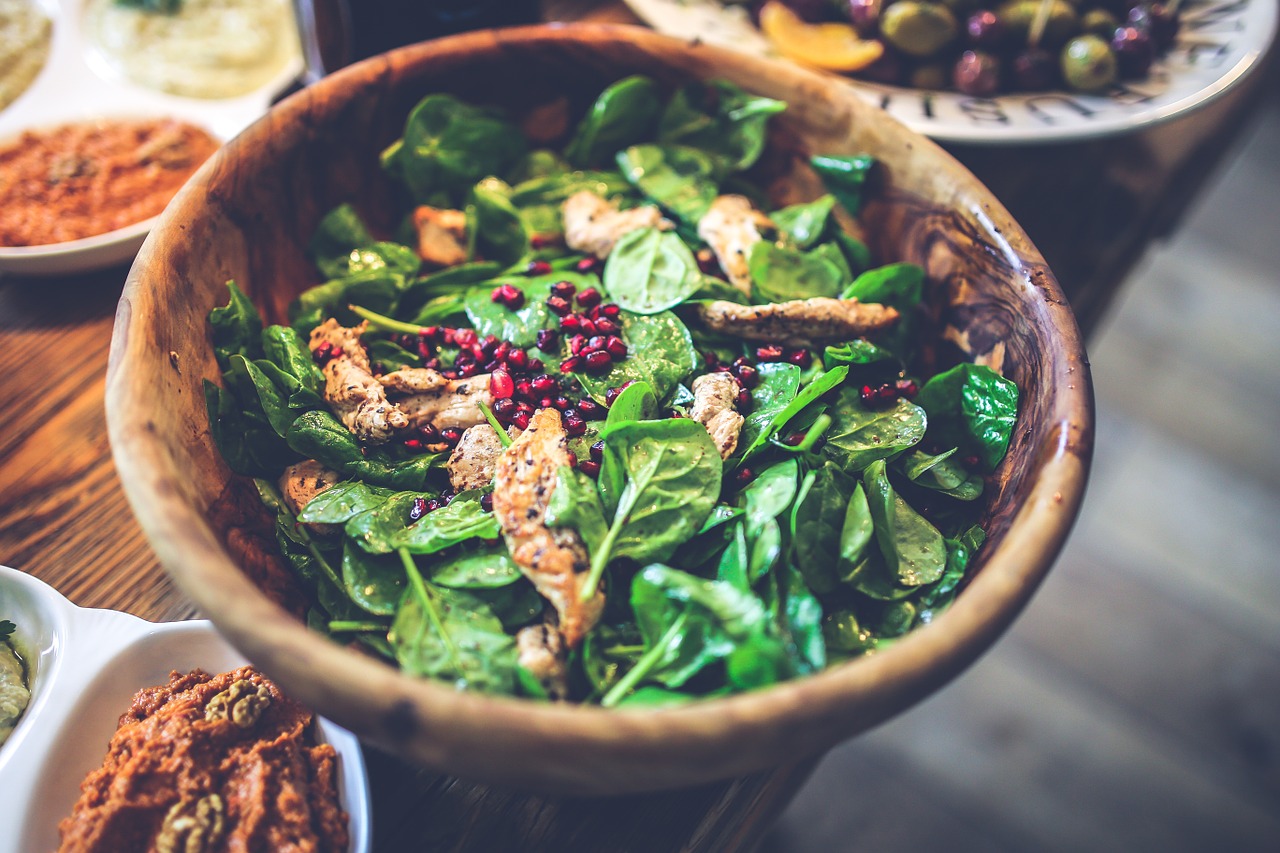
by Michelle Dwyer | Sep 3, 2015 | Blog, Health, Recipes, Vegetarian/vegan
I was inspired to write this post based on a recent article that claimed salads had no nutritional value and should be avoided. I won’t bother sharing the article, from a major daily publication, but I will say that if you are talking about iceberg lettuce drowned in highly processed dressings full of unhealthy fats, sugar and additives, then yes I would agree. However, maybe it is because I’m from California or maybe it’s because I think of salad SO differently, but I think a hearty salad is not only very nutritious but delicious as well! The key: choose quality ingredients and go for variety!
Here’s my easy “Build a Hearty Salad” formula:
-
Choose a protein
-
Choose some vegetables
-
Choose some greens
-
Add some healthy fats
-
Optional: add some beans
-
Optional: add some whole grains, starchy vegetables or fruit
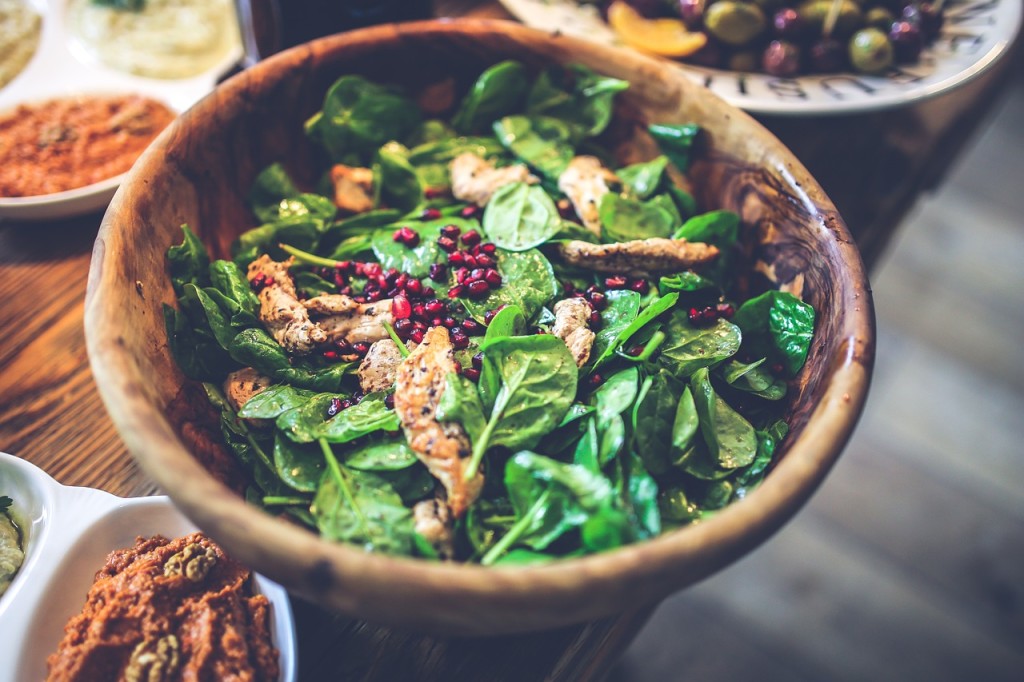
Protein: 3 oz (size of a deck of cards)
- chicken
- turkey
- grass-fed beef
- fish or shellfish
- hard boiled egg
- cheese*
- edamame
- tofu
- tempeh
- beans or lentils*
Vegetables: Pick 2 or more (1+ cup total)
- asparagus
- broccoli
- cauliflower
- cucumber
- red bell pepper
- green beans
- tomatoes
- zucchini
- carrots
- artichoke hearts
- onions
- mushroom
Greens: 1-2 cups
- cabbage
- kale
- mixed greens
- spinach
- arugula
- fresh herbs like parsley, cilantro, dill or basil
Healthy fats: 1-2 T.
- Nuts and seeds: almonds, walnuts, sunflower seeds, pistachios, pumpkin seeds, peanuts, pine nuts, Brazil nuts, hemp seeds, chia seeds, flax seeds
- cheese*
- olive oil
- avocado
- olives
Beans & legumes: ½ cup (optional)
- beans: garbanzo, black, pinto, kidney, white or cannellini
- lentils
Whole Grains, Starchy Vegetables or Fruit: 1/3- 1/2 cup (optional)
- quinoa
- barley
- millet
- bulgur
- brown rice
- sweet potato or yams
- beets
- winter squash like roasted butternut or delicata
- pomegranate seeds
- berries like strawberries or blueberries
- fresh figs
- citrus like orange or grapefruit
- mango
*some foods could count in either category: for example, cheese could be a protein or a fat and beans/lentils could be the protein in the salad or added for more fiber!

A few other tips and suggestions for building your hearty salads:
- Choose organic whenever possible! See my previous post on Buying Organic for more information.
- Go for variety and start with ingredients you love. The beauty of this list is to mix and match with the nutritious foods you already enjoy eating. Be creative!
- Raw vegetables hard for you to digest? No problem. Lightly steam vegetables and then cool and store them for salads later. Or use leftover roasted vegetables from a previous meal. In fact, the entire “salad” can be thrown into a pan on medium heat and eaten as stir-fry if your body doesn’t do well on raw or it’s winter and your body wants warm food.
- Don’t skip the fat! You need healthy fats to help you absorb those wonderful fat-soluble vitamins like A, E, and K.
- Don’t have time to make a salad every day? Consider my favorite thing: Salad in a Jar (lots of great ideas on this post too!)
- Most pre-made dressings are full of sugar, processed oils, and additives. There are a few better options out there, but in general I suggest making your own dressings. (See below for a few ideas and suggestions.) If you are out or don’t have a lot of time, fresh lemon juice, olive oil and a little black pepper will always be delicious!
Easy Dressings
Balsamic Vinaigrette
- 3/4 cup extra-virgin olive oil
- 1/4 cup balsamic vinegar
- Sea salt
- Fresh-ground pepper
- Optional extras: spoonful of mustard, minced shallots, minced garlic, minced fresh herbs, teaspoon dried herbs, small spoonful of honey or maple syrup
“Creamy” Greek Dressing
- 1-2 tablespoons of olive oil
- 1 tablespoon Dijon or stone-ground mustard
- 2-3 tablespoons of tahini or hummus (to taste)
- 1-2 tablespoons of lemon or apple cider vinegar
- sea salt and pepper to taste
- optional: fresh or dried dill
- water to thin, if necessary
Asian-Style Dressing
- 1/4 cup orange juice
- 1 tablespoon of orange zest
- 1/4 cup rice vinegar
- 1 tablespoon toasted sesame oil
- 1 teaspoon fresh ginger, finely grated
- EITHER 2 tablespoons reduced-sodium tamari, reduced-sodium soy sauce, or Bragg’s amino acids OR 1 ½ tablespoons of white miso
Lemon-Mint Vinaigrette
- 1/3 cup lemon juice
- 1 tablespoon Dijon or stone-ground mustard
- 1 clove garlic, minced
- 1/3 cup extra-virgin olive oil
- 1/3 cup chopped fresh mint
- 1/8 teaspoon salt
- Freshly ground pepper, to taste
- Optional: dash of honey or maple syrup
What is your favorite thing to put into a salad? Do you have a go-to combination that works for you or do you like to mix it up?
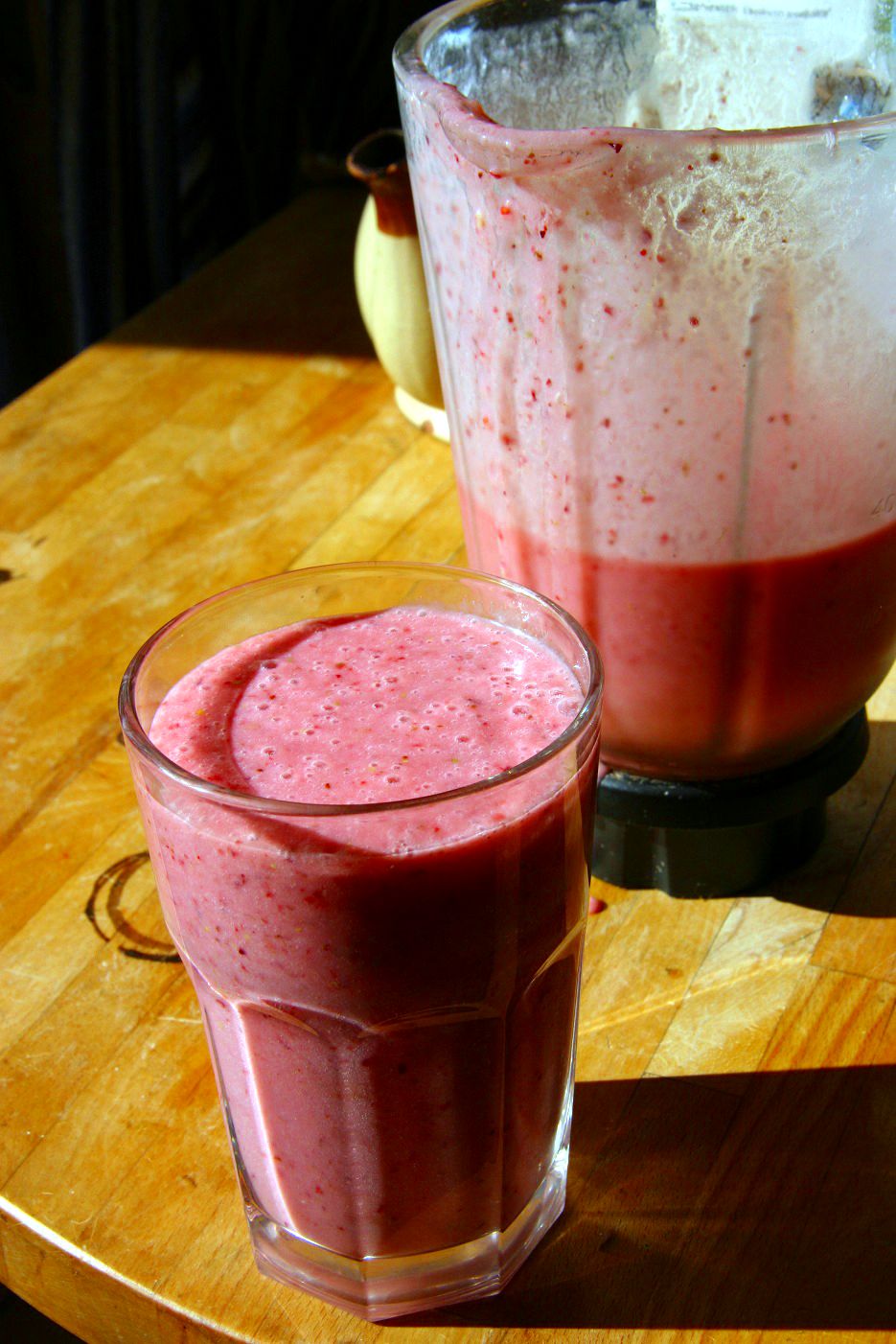
by Michelle Dwyer | Jun 7, 2015 | Blog, Health, Recipes, Vegetarian/vegan
I love making smoothies and have one for breakfast just about every day. It’s a yummy, easy way to make sure I’m getting a good amount of protein to start the day plus some great nutrients. I’ve posted about protein powder before, but wanted to give everyone some more ideas for what to put in their smoothies. I’ve adapted my suggestions from the No Meat Athlete’s Perfect Smoothie Formula post.
Basic Ingredients:
- 1/2 cup frozen or fresh fruit
- 2-4 tablespoons protein powder
- 1-2 tablespoons binder
- 1/2 cup of greens or veggies
- 1 tablespoon oil
- 1/2 soft fruit
- sweetener (optional, less or more as needed)
- 8-10 ounces of liquid
- optional superfoods, greens, and other ingredients (see below)
- 3 ice cubes (omit if fruit is frozen or if you don’t want it too cold)
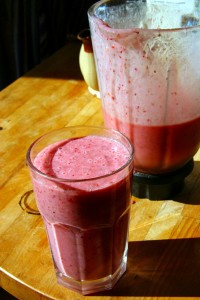 Directions: Select one or more ingredients of each type below and add to blender in specified proportions. Blend until smooth.
Directions: Select one or more ingredients of each type below and add to blender in specified proportions. Blend until smooth.
VARIATIONS AND CHOICES FOR SMOOTHIE INGREDIENTS
Frozen or Fresh Fruits
- Strawberries
- Blueberries
- Blackberries
- Raspberries
- Peaches
- Mango
- Pineapple
Protein Powders
- Hemp (ground whole hemp or shelled hemp hearts)
- Pea protein powder
- Vega brand protein powders (sweetened with stevia)
- Sprouted brown rice
- Lifetime Life’s Basic’s Plant Protein
- Collagen hydrolysate (NOT vegetarian)
(Note: Soy and whey are higher-protein options, but for a variety of reasons I don’t recommend either for long-term use)
Binders
- Ground or soaked flaxseed
- Almond butter or any nut butter
- Soaked raw almonds (soak for several hours and rinse before using)
- Rolled oats, whole or ground (as tolerated)
Greens/Veggies
- Spinach
- Frozen kale (blends a bit better)
- Lettuce
- Zucchini
- Cucumber
Oils
- Flaxseed oil
- Udo’s Blend or other EFA blend
- Hemp oil
- Coconut oil
- Almond, macadamia, or other nut oil
Liquids (unsweetened)
- Water
- Almond milk or other nut/seed milk
- Hemp milk
- Brewed tea (green or herbal)
Soft Fruit
- Avocado
- Banana (avoid if keeping to a lower sugar eating plan)
- If you have a high-speed blender that can puree a whole fruit or vegetable without leaving any chunks behind, then almost any fruit or vegetable can act as your soft fruit
Sweeteners (optional or use sparingly)
Superfoods, Greens and Other Ingredients
- Cacao nibs or carob chips (1-2 tablespoons)
- Ground organic cinnamon (1-2 teaspoons)
- Chia seeds, whole or ground (1-2 tablespoons)
- Greens powder (1-2 teaspoons)
- Maca powder (1-2 teaspoons)
- Sea salt (pinch)
- Lemon or lime juice (1 tablespoon)
- Vanilla or almond extract (1-2 teaspoons)
There are so many possibilities and options with smoothies, so be creative and find the combination that works for you!

by Michelle Dwyer | Feb 24, 2015 | Blog, Health, Movement and body
When I was younger I used to run around and play all day. We’d ride our bikes or play tag. I also played soccer from the time I was about seven and my family used to go skiing in the winter and swimming in the summer. I was a pretty active kid and moved my body without even having to think about it. I didn’t go “exercise” and I certainly didn’t think about burning calories or getting a beach body. After a few serious knee injuries and surgeries in high school, I decided to hang up my soccer cleats and for the first time ever I had to actually think about working out. I’d go to the gym or roller-blading (remember when we did that?!) or walking with friends. But it was suddenly something I had to schedule into my week or it didn’t happen.
Sound familiar?
Why is it that we take the fun and play out of movement when we get older? Why does “exercise” or a “workout” feel like something we have to do rather than something we want do? We know the importance of moving our body to our health and longevity. It helps regulate our metabolism, promotes better sleep, keeps our hormones and blood-sugar balanced, increases our ability to focus and concentrate, improves our mood, and increases our energy levels. But how about making it fun and easy again?
Here are a few of my favorite tips and suggestions when it come to moving your body:
Do something fun and that you look forward to doing. Moving your body is meant to be enjoyable!! If you are feeling like it is a “should” or a “have to” or another thing on your “to do” list, then maybe reconsider what you are doing for your movement. You are so much more likely to stick to a regular routine of moving your body if it is something you love to do!
Don’t like to run, no problem! Just walk. Walking is a great way to move the body, get some fresh air or see your neighborhood. You don’t need a treadmill to go for a walk, but if you have access to one, this can be a convenient option in the winter or very hot part of summer. Even if you don’t have time to go for a long walk, take a ten minute stroll at lunch time to get some fresh air and a break from your desk. Or park a bit farther away in the parking lot. These movements can really add up over the course of the day.
 Yoga: Again, you don’t have to pay high prices for a yoga class. Some people like going to yoga class for the community, the support and guidance of the instructor, and to get into a certain mindset. These are all good reasons to go to a studio to practice yoga. But don’t let access to a studio stop you from moving and stretching your body. There are a number of great DVDs out there (like this one from Rodney Yee that is a good place to start) or free online sources for yoga. Even just doing a few stretches on your own in the morning before you start your day, mid-day at the office, or right before bed can make a big difference.
Yoga: Again, you don’t have to pay high prices for a yoga class. Some people like going to yoga class for the community, the support and guidance of the instructor, and to get into a certain mindset. These are all good reasons to go to a studio to practice yoga. But don’t let access to a studio stop you from moving and stretching your body. There are a number of great DVDs out there (like this one from Rodney Yee that is a good place to start) or free online sources for yoga. Even just doing a few stretches on your own in the morning before you start your day, mid-day at the office, or right before bed can make a big difference.
If you have trouble with your feet: try swimming, “water running,” or water aerobics. I get it. I’ve had problems with my feet too (plus challenges with knees after three knee surgeries as a teenager). If your feet need a break, then find an activity that puts less pressure on them like water activities.
Go with a friend! Not only is it more fun to workout with a friend, but you are creating accountability. You are a lot less likely to cancel on a friend, plus it can be a great way to relieve stress and catch up with your bestie.
Lastly, here are a few of my favorite ways to move my body:
I love to walk and do so for at least 15 minutes almost every day. Some times it is just 15 minute walk to and from my office. Other times I walk for over an hour chatting with my friend or family on the phone. Other times I make a walking date with a friend and walk the lake near my house. Another good tip, if possible, is to do some of your errands while walking. Pick up that birthday card for your sister or drop that bill off at the post office. Sometimes it can be helpful to have a goal or purpose in your walking as well as a motivator. Best part about walking? It’s free, it’s convenient and it’s really enjoyable! I love being in my neighborhood, seeing the flowers change over the seasons, getting some fresh air and sunshine. I am lucky enough to live in a place where I can walk outside just about year round.
 I also love to dance. Did I grow up as a dancer? No. Do I sometimes have two left feet? Oh yes. But do I love to move my body to fun music anyway? Yes!!! My favorite place to shimmy and shake my body is called Hipline near my home in Oakland, California. Hipline is a really unique and special place created by two sisters, Samar and Gabriela. It’s an all-women, body-lovin’, empowering, fun community of incredible instructors and welcoming members of all shapes, sizes, and backgrounds. I always look forward to going to class and I always leave with a smile on my face. If you live in the area and want to check out Hipline, they have a free pass for first-timers. (And I promise, I’m promoting them because I love them and not because I get anything for it.) If you aren’t in the area, then I encourage you to find a dance class near you. Try a Zumba, salsa, hip-hop or African dance class and see how good your body feels! And you could always just have a dance party in your own house—put on some good music and dance with your kids, your partner or just yourself!
I also love to dance. Did I grow up as a dancer? No. Do I sometimes have two left feet? Oh yes. But do I love to move my body to fun music anyway? Yes!!! My favorite place to shimmy and shake my body is called Hipline near my home in Oakland, California. Hipline is a really unique and special place created by two sisters, Samar and Gabriela. It’s an all-women, body-lovin’, empowering, fun community of incredible instructors and welcoming members of all shapes, sizes, and backgrounds. I always look forward to going to class and I always leave with a smile on my face. If you live in the area and want to check out Hipline, they have a free pass for first-timers. (And I promise, I’m promoting them because I love them and not because I get anything for it.) If you aren’t in the area, then I encourage you to find a dance class near you. Try a Zumba, salsa, hip-hop or African dance class and see how good your body feels! And you could always just have a dance party in your own house—put on some good music and dance with your kids, your partner or just yourself!
Lastly, I love to stretch my body. I have been doing some sort of yoga for almost 23 years. I’m not always consistent with my practice, and I certainly would not call myself a yogi. In fact, because of some of the challenges with my knees, I have to modify and adjust quite a bit in most classes (and I’m totally okay with that!). I think the key with taking a yoga class is finding the right fit. So if at first you don’t succeed, try, try again. Really. The personality, style and approach of the instructor can make a big difference. There are many different types of yoga that involve different poses, length of time in those poses, and even how vigorous the pace of the movements are. You might even want a different yoga class at different times of the day or week. I might be in the mood for something more rigorous in the morning but later in the week look for something more restorative and stress-reducing. If you are new to yoga, start slowly to avoid injury and remember it is not a competition!
So what are you doing to move your body? What do you like best about what you are currently doing? Would love to hear from you!

by Michelle Dwyer | Jan 1, 2015 | Blog, Health, Nutrition, Recipes, Vegetarian/vegan
I don’t know about you, but I love a warm cup of vegetable broth. Right now I’m sipping a large mugful as I recover from a bit of over-indulgence over the holidays. I’m also hoping to keep a cold at bay by drinking as much broth as possible. A cup of delicious broth can also make for a satisfying small meal or help keep you warm on a cold day. This broth also makes a great base for any number of soups. There are a lot of great broth recipes out there, but the one I’m going to share with you is based on the Magic Mineral Broth recipe made famous by Rebecca Katz in One Bite at a Time.
Vegetable Broth
Ingredients:
- 2 unpeeled carrots, cut into thirds
- 1-2 unpeeled medium onions, including peels/skin, cut into chunks
- 3-4 stalks celery, including the heart, cut into thirds
- 1 head of garlic, including peels/skin, roughly chopped
- few inches of fresh ginger root, roughly sliced
- 1/2 bunch fresh flat‐leaf parsley
- 1 sweet potato or yam with skins on, quartered
- 1 8‐inch strip of kombu seaweed (available at Whole Foods, online or if you live in Oakland, HERE)
- 2 bay leaves
- 12 black peppercorns
- 4 whole allspice or juniper berries (optional)
- 1 tablespoon quality sea salt (note: if I’m going to cook beans with the broth, I leave the salt out)
Note: Adjust the amount of ingredients to the size of your stock pot. Also, I often use vegetable scraps to make my broths (see below for more info on using scraps). Other vegetable choices (depending on the flavor profile you want and what you have on hand) can include mushrooms, leeks, fennel, greens, fresh herbs, parsnips, and potatoes.
Directions:
- Rinse all the vegetables well to remove any dirt.
- In a large stockpot, combine all the ingredients except the salt. Fill the pot to 2 inches below the rim with water, cover, and bring to a boil.
- Remove the lid, decrease the heat to low, and simmer a minimum of 2 hours. As the stock simmers some of the water will evaporate. Simmer until the full richness of the vegetables can be tasted. I like to try and simmer mine for as much as 4 hours or more.
- Add the salt and stir (unless you plan to use the broth to cook dried beans).
- Let stock cool in pot until room temperature.
- Strain the stock using a large coarse‐mesh strainer (remember to use a heat‐resistant container underneath) and/or cheese-cloth or clean linen towel. Compost the cooked vegetables.
Makes 6 to 7 quarts, depending on stockpot size.
Broth can be frozen up to 6 months in a variety of airtight container sizes for every use.
 Tips for what to do with your broth:
Tips for what to do with your broth:
- You can add a little tamari, Bragg’s amino acids, coconut amino acids, or miso to your broth for a little added flavor.
- I also often add some coconut oil for a bit more substance.
- If you are not vegetarian/vegan, you can also add some gelatin for added protein.
- When I’m making broth to really support my immune system, I will add A LOT more ginger and garlic to the initial broth ingredients. You can also add dried or fresh shiitake mushrooms, oregano, reishi mushrooms, and/or astragalus root.
- Again, broth can be sipped alone or used as a base for any soup.
- Broth is really great to drink when recovering from surgery, illness or chemotherapy. It is a great way to get nourishment for your body without putting too much stress on your digestive system.
- To store leftover broth, I put them in mason jars to drink over the week and then freeze the rest.
Using vegetable scraps:
One of my favorite ways to make vegetable broth is to use leftover vegetable scraps. Not only does this reduce waste and save money, but often the foods we consider “scraps” contain great nutritional benefits!
- When cooking any meal, save your cleaned vegetable scraps in a plastic freezer bag and store in freezer until ready to make into broth. I just keep adding ingredients to bags until I’m ready to make broth (or the freezer gets full!).
- Good “scraps” to include are carrot peels, carrot tops, celery tops and bottoms, fennel tops, leek green tops, onion and garlic skins, broccoli and cauliflower stalks, stems from herbs like parsley, green tops of radishes, turnips or beets (just note that if you use beet greens, your broth will turn red!). I also added any vegetables that we didn’t get a chance to eat in the week that may be going a little limp.
- Just dump the frozen vegetable scraps into your pot, add in some fresh vegetables that may not be included in your frozen bag, and then follow the directions from above!
I would love to hear from you. Have you made your own broth? What tips or suggestions do you have?
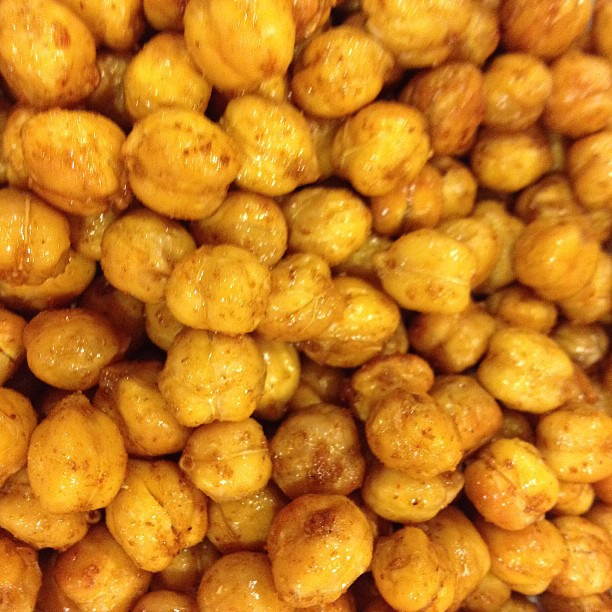
by Michelle Dwyer | Oct 23, 2014 | Blog, Health, Nutrition, Recipes, Vegetarian/vegan
Many people benefit from eating every 3 to 4 hours. A great way to be sure your body is getting the energy it needs is to eat a mid-morning and/or afternoon snack. Snacks are generally smaller and lighter than meals, but look for ones that are nutrient-rich. Nutrient-rich means that the food is concentrated in vitally important vitamins, minerals, antioxidants, phytonutrients, fiber, and energy.
Many of these items can be mixed and matched. For instance, add some almond butter to your apple or swap the tortilla for gluten free crackers for your avocado salsa. Adding enjoyment and variety to your snacks makes them more enjoyable for you and also adds different nutrients to your diet. Also, be sure to consider your own biochemical individuality—what works for YOUR dietary system and nourishes YOU—when choosing healthy snacks!
Nuts or seeds like almonds, walnuts, sunflower seeds or pumpkin seeds—raw & unsalted (1/4 cup = 1 serving)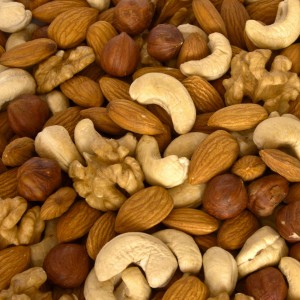
Nutrition: Good source of protein & healthy fats; also good sources of fiber, calcium, magnesium, manganese, zinc, folate, vitamin E, & B vitamins; varies depending on nut/seed.
Tips: Remember that 1/4 cup is a serving size, so enjoy but do not over-‐indulge. Many people find nuts and seeds easier to eat and digest if they have been soaked or sprouted first.
Hummus or other healthy dip and veggies (carrots, celery, red bell pepper, broccoli, radish or pea pods)
Nutrition: Fiber, phytonutrients, & vitamin C. Carrots are also a great source of vitamin A, K, biotin and fiber. Celery is a good source of potassium, and vitamins B6 & B1.
Tips: These are easy to pack ahead of time and make for a yummy, crunchy snack. For some other healthy dip ideas, check out this artichoke dip or this olive pistachio dip or this vegan pesto!
Almond butter and whole-grain, seeded crackers like Mary’s Gone Crackers (2 T. almond butter & about 7-10 crackers)
Nutrition: For benefits of almond butter, see nuts/seeds above. Whole-grain crackers are higher in fiber & other minerals than crackers made with enriched flour.
Tips: Look for crackers without a lot of additives and ingredients; simple is best.
Whole grain or corn tortilla, avocado and salsa
Nutrition: Avocados are good sources of fiber, vitamin C, E, K, folate & potassium. Tomatoes are great sources of vitamin C, biotin vitamin K, carotene & lycopene.
Tips: Use about a ½ avocado in a serving. For the other half, leave the pit in the fruit and place in the refrigerator in a sealed container—it will keep for the next day.
Fruits like apples, oranges, berries, plums, or pears
Nutrition: Good amounts of antioxidants, fiber, phytonutrients, vitamin C; amounts vary depending on the fruit
Tips: It sounds so simple but fruits with a high fiber count can be quite filling and refreshing as a snack. Can pair with some almond butter for some added fat and protein.
Roasted seaweed
Nutrition: Good source of vitamins A and C and iodine.
Tips: This delicious snack is a great way to add sea vegetables to your diet. Great as an after-workout snack! The iodine in seaweed can help regulate hormones like estrogen and thyroid.
Roasted chickpeas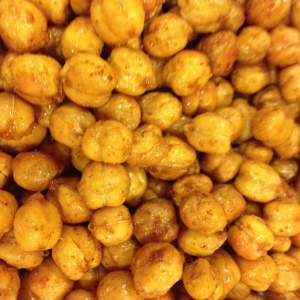
Nutrition: Excellent source of phytonutrients, molybdenum and manganese. They are also a very good source of folate and copper as well as a good source of dietary fiber, phosphorus, protein, iron, and zinc
Tips: Make these yourself because the ones in the store are usually full of added sugar. For an easy recipe, check out here or here.
Edamame
Nutrition: High in protein and low in fat; good source of fiber, thiamin, iron, magnesium, phosphorus and copper, vitamin K, folate & manganese.
Tips: You can get shelled edamame in the frozen food section of most stores. Add soy sauce, tamari or Bragg’s if you want some flavor. If you have thyroid issues or a food sensitivity to soy, you will want to avoid soy products.
Baked kale
Nutrition: Good source of vitamin A, vitamin C, calcium, and potassium.
Tips: Great for if you want something crunchy and savory with the benefits of kale. Easy to make yourself or can get at the store.
















